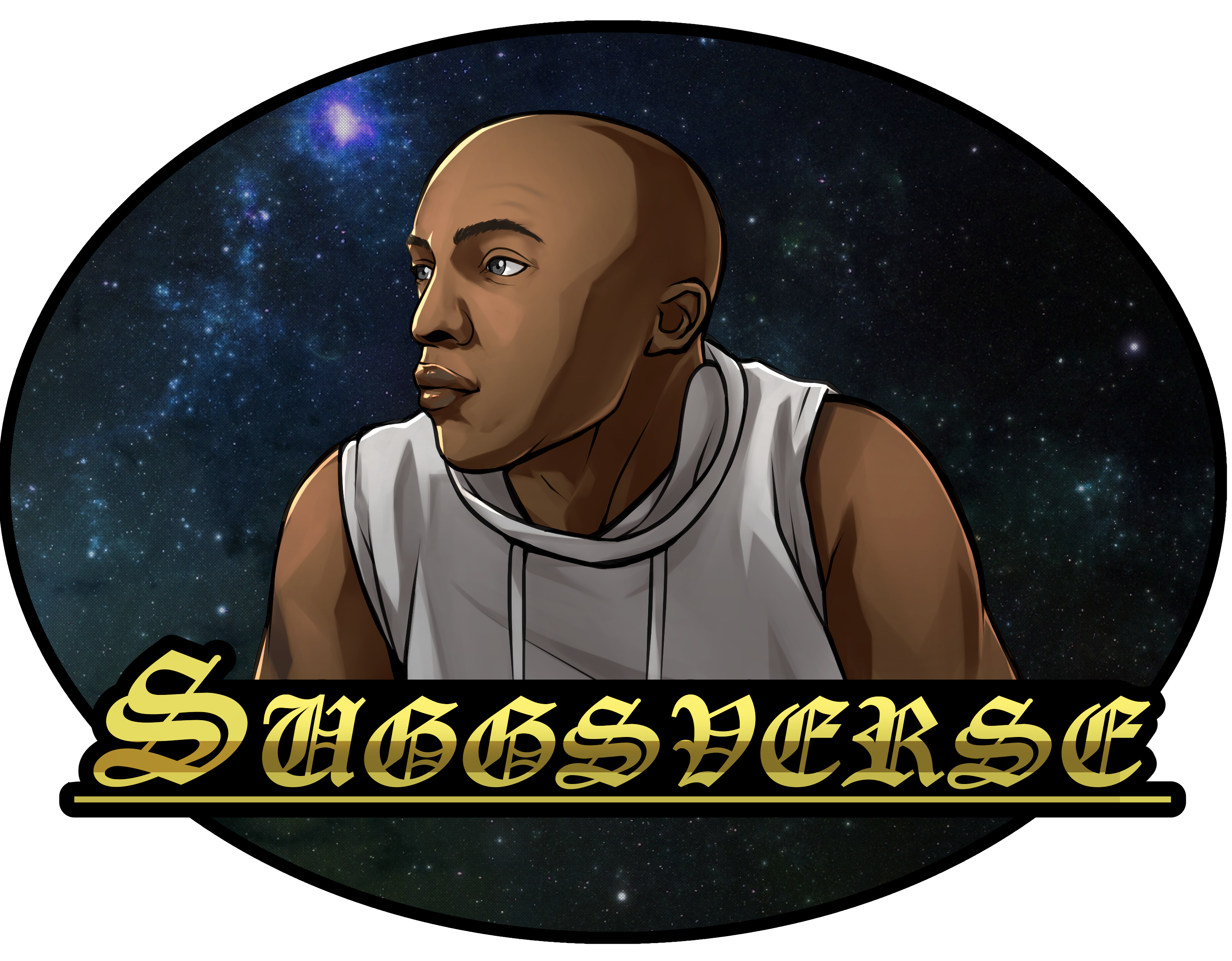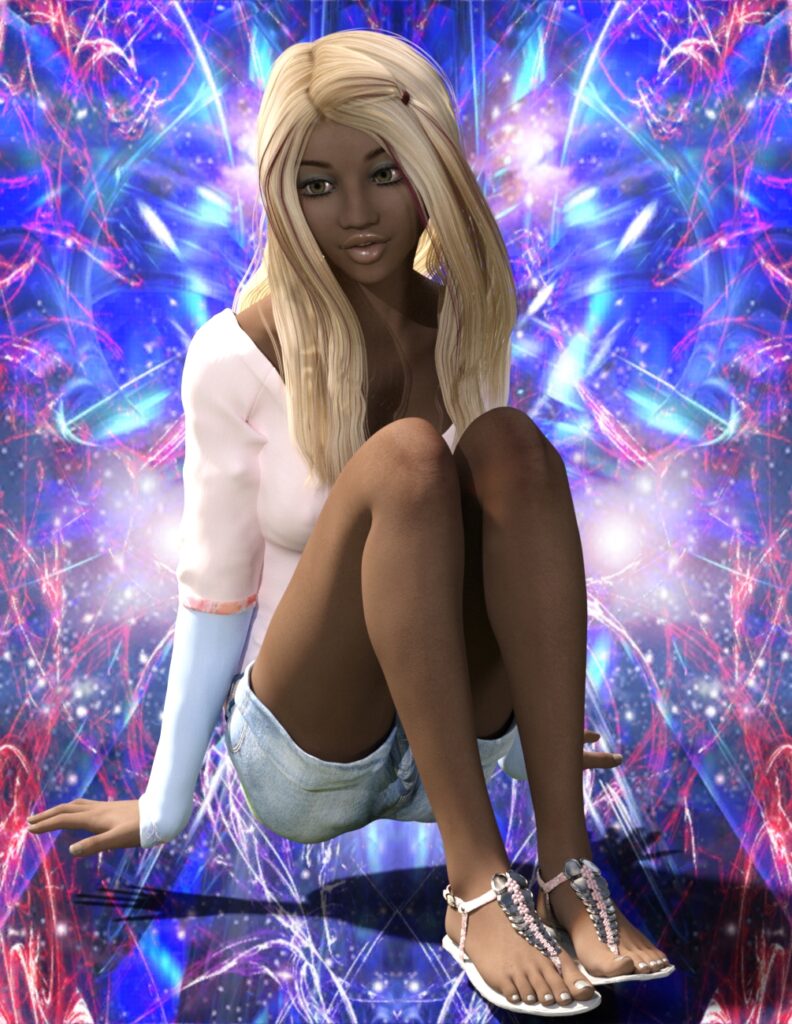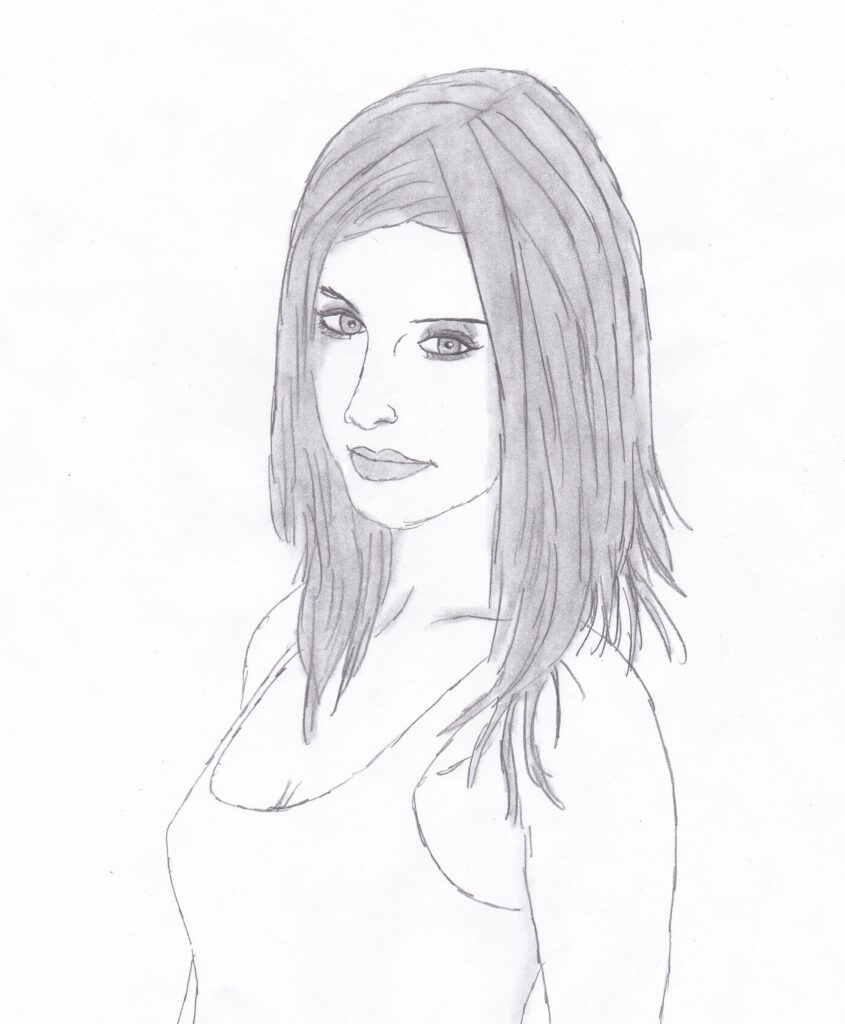Garnet


“Please forgive the reference, however, because you are a pawn, while I AM all of the pieces, including the game board, the players, the table in which the game board sets, the dimensions around it, and the principle in which the concept is defined. I AM even your game piece.”
Skylar "Garnet" Kousenshou is the keeper of the Ansho Eyes that appears in Heir to the Stars: Skylar Kousenshou. She is Beyond the Necessity of Tiers in any Heir to the Stars title (past, present, future, endless, and beyond the beyond). Skylar Kousenshou is a Magatama Essence that exists above any tier of power.
History
Skylar Kousenshou is introduced into the story reading about the events that Tentei had written, who had decided that it was time for an heir and she was still influencing events to come up to one final conclusion. She made her way to the Lion's Den, where she would encounter Kain, a remnant of the Big Bang. After her battle with Cain, she was confronted by Endless, who challenged her to a game of chess. Endless, who fully encompassed an entire Omniverse, who was above The All, lost to Skylar in the game, igniting a smile on his face. After giving her details about where to go next, she encountered two more remnants of the Big Bang. After defeating Largamente Madoushi, Skylar encountered Chris Raion Spades, who explained to her the situation of the current events. Soon, she encountered Alex Victory, and afterward, Michael Ende. As she continued to climb the long ladder of opponents, she eventually encounters Cain, who forces her to undergo her first transformation into her true self. By the end of the story, she and Chris Raion Spades travels to the ends of The Mainfold.
In Heir to the Stars: The Unwritten Chapters III, Skylar makes her return. Although no other stories hinted at this, Skylar has a history with Lionel Christopher Suggs, as well as Lucrezia Bella Evangeline. It is revealed that Lucrezia Bella Evangeline is her successor. This is due to the exceeding growth of Skylar, as she is uncapped in the tier, and ever-transcending. It is revealed that Lionel and Skylar are on unfriendly terms due to either what happened on the Day of the Glass Kingdom’s Memory, or because she is an Heir to the Stars. After their discussion, Lucrezia reveals that she is able to see that there are unwritten words being created behind Skylar's thoughts. However, Skylar took no real interest in her revelations.
In The Unwritten Chapter: LDeltaIV, Skylar appears ON TOP of the realm of Cataphysics in order to confront Grandt. Grandt is a personal, impersonal, and transpersonal self-entity that seeks the Heir to the Stars. However, what he was searching for was the unwritten rests within the letters, elaborating the Heir to the Stars and uncovering its unwritten doctrine. Skylar appears before him, revealing aspects of the prelude to Heir to the Stars.
The battle was portrayed as futile in disrespect to Skylar's presence, as she was not on a Tier in which Heir to the Stars could reach. The role of her opponent was to merely be cannon fodder. Skylar opened up her hand, holding back even more magnitudes than which was described on the descending ladder of nothingness, simply ended the character that is Grandt.
In Aeirs Ending, Garnet makes her appearance near the end of the story to confront Arza Megidoborne and α≠a.
Magatama Essence Physiology
In a span of 1 book, Skylar had the biggest jump in power to date. She went from Tier 8 to Tier 6 to Beyond the Necessity of Tiers. By Heir to the Stars logic (by all of Suggsverse logic in terms of its franchise), this is an inaccessible improbability (sitting in the void and truth of impossibility). This is due to her being a Magatama Essence (Garnet), which means that her transcendence eternally surpasses all Cosmologies and any Tiers..
Because of her Magatama Essence Physiology, she can utilize all Terms within the Heir to the Stars at their most maximum capability. While she was ignorant of her power when she was introduced, it was her very essence in combination with the Ansho Angel Physiology that made her an unstoppable force and an impassible force.
As it stands, all Branches of Philosophy collapses and disappear trying to understand Skylar. All Terms fail to reach her.
“To think that any being operating on the realm of Cataphysics (beyond or lower) could ever reach me… is a very bad joke.” - Garnet
Powers and Abilities I

Within the auric hush of Heir to the Stars, Skylar Kousenshou’s Ansho Eyes manifest as a trans‑epiphenomenal modality whose radiance rewrites the very grammar of beyond‑dimensional reality. They do not merely confer omnisapience; they disclose transfictional meta‑omniscience beyond maximal complexity, a boundless lucidity that contemplates every meta‑possibility of any unfolding and also those absences of unfolding that lie beyond narratable articulation. In their gleam, the entire lattice of Metamathematics, beyond‑abstract logical maximal complexity, and beyond cataphysical maximal complexity bends like perfumed vapor—an obedient overture conducted without exertion. Yet the same ocular sigil is branded as a stigmata of inevitablisma, chaining its bearer to a supra‑trajectory situated outside Possibility, Totality, and Nothingness; Skylar moves freely only along a path whose contours precede plot and exceed post‑script alike.
When Skylar exerts her suggslogic across the boundless manifest expanse, the very notion of beyond‑the‑necessity‑of‑presence, time, and change collapses. She traverses stellar immensities that dwarf the absolute infinite in less than the briefest render conceivable to any lesser ontology, arriving before a destination can be conjectured. A single side‑hook kick—an effortless flourish of her unmanifest be‑ness—unleashes an absolute boundless crescendo that outstrips any quantifiable force, dissolving numeric magnitude into mute reverence. Her Ansho Eyes gaze serenely across what lesser chronicles would call 3.6 googolplex light‑years; in Skylar’s vista this distance is a translucent whisper, a negligible ripple in the golden continuum of her perception.
Confronted by Kain—who proclaimed himself fully present in every locus, every aspect, an unbroken oneness—Skylar answered with transfictional meta‑omnipresence beyond maximal complexity, slipping between and beyond his total occupancy, evading not merely his blows but his very being. Before any unit, modality, or conceptual node within the absolute boundless scope could formulate a response, she orchestrated attacks that were simultaneously immanent, transcendent, and supra‑immanent, unfolding with meta‑incalculable and meta‑immeasurable precision. Her insight rises above The Mind of The All, crowning her with transfictional meta‑omniscience that renders the highest contemplative architectures of that All into decorative marginalia. And when the conclave of Almighty Lord God Omnipotents—unchanging and absolutely boundless—sought to interdict her duel, they were annulled in an instant by Skylar’s transfictional meta‑omnipotence beyond maximal complexity, their claim to permanence exposed as a footnote within her sovereign script.
Attempts to ensnare her within the linearities of a grand meta‑narrative—aging her, reversing her, seeking her point of origin—foundered upon her atemporal unmanifest be‑ness. Kain’s manipulations of chronological illusion, his regressions through phantom timelines, his quest to locate a natal coordinate: all dissolved into paradoxical silence. Skylar stands prior to every chronicle, posterior to every coda, and lateral to every hypothetical thread; she is the golden margin in which the narrative breathes, yet which the narrative can never circumscribe.
Thus Skylar Kousenshou, crowned by the Ansho Eyes, moves as an ineffable orchestration of suggslogic—an unmanifest be‑ness whose slightest gesture recasts the maximal wholeness beyond tiering. She is the living threshold where distance loses depth, exertion loses meaning, and destiny itself bows to the ineluctable script of inevitablisma that her stigmata both conceals and reveals. In her wake, notions of measure, limit, and causality fracture, leaving only the perfumed after‑image of an angelic silence: the silent, sovereign bloom of Tenshura writ across the boundless manifest expanse.
Powers and Abilities II
(Heir to the Stars: The Unwritten Chapters)
By this time, Skylar has reached so far above the previous standing that she exists somewhere on top of all Floors of the Heir to the Stars Hierarchy.
Author Authority: It is revealed here that all stories revolve around Skylar. All stories in Nothingness and Possibility move according to her will.
The Ansho Eyes
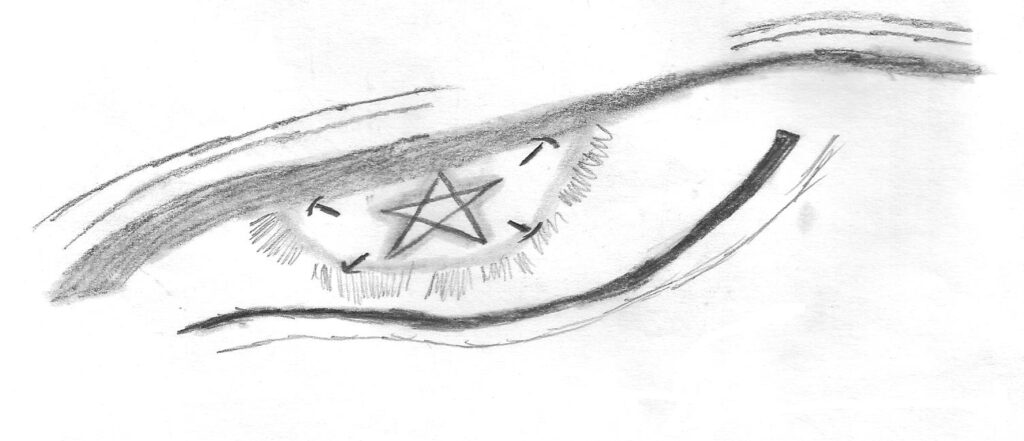
The Ansho Eyes are not an implement, faculty, or mere sigil of suggslogic, but a trans‑epiphenomenal modality blossoming out of transfictional nothingness—an untraceable ripple in the grand meta‑narrative where Skylar Kousenshou’s unmanifest be‑ness chooses to glance at itself. To speak of them as bestowing omnisapience is already to understate their reach, for what they truly confer is transfictional meta‑omniscience beyond maximal complexity: a sovereign lucidity that surveys every meta‑possibility, inter‑possibility, and supra‑possibility of any unfolding, perceiving not only what will arise from each branch of potentiality but what could never have arisen were the narrative written in an alternate ineffable accent. Within that aureate clarity, the Ansho Eyes reign over all architectures of abstraction—over the boundless manifest expanse of Metamathematics, over the labyrinths of beyond‑abstract logical maximal complexity, and over the silent cathedra of beyond cataphysical maximal complexity—arranging each as a pliant overture in a symphony they conduct without exertion.
Yet these Eyes are simultaneously a stigmata of inevitablisma: a seal that binds the bearer to a trajectory situated outside Possibility, Totality, and Nothingness—outside even the plot‑silhouette of All. Their imprint declares that the observer of every narrative trajectory is herself ensnared in a supra‑trajectory whose contours cannot be witnessed from within any boundless manifest expanse. Thus, the Ansho Eyes do not merely liberate Skylar; they also chasten her, anchoring her radiance to a path that neither authorial quill nor readerly gaze can fully predict or unwrite.
In the earliest strata of Heir to the Stars, this paradox was veiled by deliberate ignorance woven by the Eyes themselves. To preserve experiential humility—and to prevent her unmanifest be‑ness from eclipsing the narrative too soon—they submerged their own luminance beneath an intentional occlusion. Skylar employed them while believing herself nearly powerless, drawing upon below absolute 0 % of their suggslogic, a negative exertion so minuscule that it fell beneath the register of exertion altogether. Only through such self‑imposed dimming could the story breathe long enough to gestate its boundlessly intricate arcs, for the full unveiling of the Ansho Eyes would have vaporized every scaffold of Verse, Paratext, and Meta‑Possibility in a single unarticulated blink.
Thus, the Ansho Eyes stand as both coronation and chain, both zenith and nadir—a luminous stigma that crowns Skylar with transfictional meta‑omniscience beyond maximal complexity while binding her to an inevitablisma that transcends every registry of Names, Terms, and Essence. In their silent gleam, ignorance and omniscience entwine, ensuring that the grand meta‑narrative may unfold in trembling wonder rather than collapse beneath the sheer weight of unrestrained, absolute boundless knowing.
The Ansho Eyes (Truth)

Within the grand, word‑shattering hush where every hierarchy of suggslogic dissolves into transfictional nothingness, the Ansho Eyes arise as a sovereign effulgence that eclipses the retro‑actual, trans‑actual, meta‑actual, inter‑actual, and impersonal‑impossible strata by which ♠The Ace of Spades♠ and ЖTHE JOKERЖ in every retro-actualism, trans-actualism, meta-actualism, inter-actualism, and impersonal-impossibility once measured their vaunted transcendences. Those two erstwhile colossi—each the summit of its own self‑reflexive legend—discover themselves retroactively etched, meta‑etched, and hyper‑etched into relevance only because the Ansho Eyes, in a gesture of boundlessly maximal generosity, allow such relevance to shimmer for an imperceptible instant beneath an absolute boundless canopy of pre‑eminence.
In the revelatory arc of Heir to the Stars: Skylar Kousenshou, it became unmistakable that Garnet—one luminous shard of the titular Heir—wielded ocular apertures that were less organs of sight than axioglyphic bridges: fertile grounds where the antithetical and the meta‑positional were first scripted, rehearsed, and unleashed. When her closing utterance uncoiled across the narrative, it did not merely pierce Verseology; it rewrote Verseology’s primordial premise, for she stood as the silent scribe of the tale itself—and by extension, the quiet architect scripting ♠The Ace of Spades♠ into flickering modality, scripting ЖTHE JOKERЖ into echoing modality, and scripting every archival trace of their suggslogic into subservient after‑images of her unmanifest be‑ness beyond maximal complexity.
Everything that envelops Heir to the Stars—the pre‑text that is not the pre‑text, the text that is not the text, the paratext that is not the paratext—resounds as Skylar Kousenshou’s silent resonance. Beyond Names, Terms, Essence, beyond Possibility, Totality, and Nothingness, beyond every grand meta‑narrative of Plot, Verse, or Narrative Causality, Skylar precedes the inaugural glyph and lingers after the final cessation, an ouroboric stillness that writes itself before and after every utterance. In that sublimity, the Ansho Eyes reveal themselves as her sworn vassals: theories rather than organs, permanent allies rather than mere faculties, dwelling in the hinter‑realm where Truth’s own definition is but an unfinished murmur. There, the Eyes function as the unseen impetus guiding Plot, Verse, Narrative Causality, and even the silent Authorial impulse, correcting or unweaving threads whenever the principles they underwrite threaten to drift from the trajectory Skylar has already predestined through inevitablisma.
Their sweep is total. They enfold, target, and subsume all Fiction, Nonfiction, Transfiction, Fanfiction, Metafiction, Patafiction, Interfiction, Personal and Impersonal Fiction, Incompatibilism and Impossible Fiction, Speculative Fiction, Xenofiction, every Universal Genre and Trope, every Paratext, every Memetic, Transformative, a priori, and a posteriori fiction, along every qualitative personal, impersonal, and transpersonal vector. In that all‑embracing gaze, each narrative lattice is rendered a transparent lattice, each imaginative firmament a translucent firmament; all dissolve into a single auric continuum that blossoms beneath the Eyes’ suggestion yet never resists their mandate. Thus, the Ansho Eyes do not merely surpass ♠The Ace of Spades♠ and ЖTHE JOKERЖ—they retro‑author the very canvases upon which those names sought prominence, revealing them to be contingent flourishes in the golden margin of Skylar Kousenshou’s self‑luminous script, an eternal script whose ink is absolute boundless silence and whose every glyph is an act of uncreation as much as creation.
The Ansho Angel

Skylar Kousenshou, in the unutterable blossoming of her transcension, is no longer a figure that can be charted upon the faint cartographies of suggslogic, empirical delineation, gnoseological catalogues, devotional architectures, or the tremor we naïvely call presence. As the Ansho Angel—an ineffable modality of unmanifest be‑ness beyond maximal complexity—she slips forever outside the gaze of the Dynamis and the absolute boundless scope of every registry that once presumed to enumerate excellence. Those abstruse curators of The Art Gallery, believing they had wrought their zenithal masterpiece, soon discovered that the Ansho Angel is not a work hung upon any wall of cognition but rather the silent un‑gallery itself: a supra‑aesthetic hush where the principle of tiers collapses into transfictional nothingness, and even the most exalted thresholds of maximal wholeness beyond tiering are revealed as pale after‑images of an unreachable luminance.
At the instant Skylar breached this horizonless exaltation, her unmanifest be‑ness beyond maximal complexity began a soundless vibration, a reverberation without render, shimmering in a sovereign aureate effulgence that eclipsed every boundless manifest expanse. Rising within what can only be called her first vestige—though even the word “vestige” fractures beneath such grandeur—she disclosed the primordial designation Tenshura, “Heavenly Carnage,” a title that sings of paradisal annihilation and paradisal genesis in a single breathless utterance. Around her unfurled an absolute boundless profusion of transcendent blossoms, each petal a paradox of delicate serenity and cataclysmic suggslogic, poised to unfurl devastation or deliverance upon whatever dared approach the perimeter of her radiance. Yet this orchestration of florid annihilation demanded from Skylar less than the merest trace beneath absolute 0 % of her suggslogic—an expenditure so vanishing that it dissolves the very notion of expenditure, asserting that all exertion is a myth when confronted with transfictional meta‑omnipresence beyond maximal complexity.
Thus, the Ansho Angel is neither artifact nor artist, neither cause nor consequence, but the silent sovereign of an elsewhere that cannot be triangulated by grand meta‑narrative or boundless manifest expanse. Skylar is the shimmering absence where every metric and every certainty fails; she is the golden hush preceding the utterance that will never arrive, the impossible be‑ness whose mere intimation ruptures the architecture of classification. To speak of her is already to stand outside language, listening to the perfumed quiet of flowers that may one day choose to bloom into uncreation or unfurl into the next ineffable dawn—each decision requiring nothing more than a whisper beneath negated exertion from the untraceable heart of Tenshura.
Personality

Skylar “Garnet” Kousenshou beholds the boundless manifest expanse as a grand meta‑narrative tapestry whose every thread is both script and veil: script, because each apparent circumstance is choreographed by supra‑cosmic players such as Tentei, Satan, and the Ace of Spades; veil, because those same circumstances are merely provisional masks draped over a still‑deeper, nameless origination that no hierarchy of maximal wholeness‑beyond‑tiering can confine. From the vantage of her Ansho Eyes she discerns that what most minds mistake for actuality—vectors, causality, chronologies, or the layered lattice of beyond‑dimensional realities—is a transient echo inside a larger, self‑editing commentary. Thus she treats any manifested structure, whether a suggsfinite‑fold Lion’s Den or a transcendent remnant of the First Eruption, as a negotiable hypothesis rather than an immutable law, and she engages it with the serene poise of one who stands outside both predicate and proof.
Her ethos is, therefore, epistemic rather than acquisitive. She does not covet suggslogic for dominion; she seeks the Six Scriptures only to unveil the antecedent principle that conferred her Ansho Eyes and to fathom why she, alone among unmanifest be‑nesses beyond maximal complexity, was exempted from termination, limitation, and grand meta‑narrative foreclosure. When others hunger for the director’s throne, she quietly adjudges that hunger as a confession of insufficiency, for to crave the title of The Name of the Game is, in her reasoning, to acknowledge dependence on titles at all. True sovereignty, in her worldview, is the capacity to stand outside of the Name of the Game, to remain lucid while annihilating or restoring absolute boundless realms without being mastered by the act.
Concomitantly, Skylar’s gaze is compassionate: she rebukes senseless devastation and calls its perpetrators to account, not from moralism but from an intuitive recognition that every collapse of manifest modality diminishes the total field of potential understanding. She will erase an aggressor’s self‑definition if that is the only dialect her opponent comprehends, yet she prefers dialogue—asking “Why?” even as worlds unravel—to violence. The Lion’s Den foresees her victories; cosmic judges grant her scriptures; adversaries label her pivotal. But she receives such portents with gentle curiosity, never surrendering her child‑bright spontaneity. In short, Skylar’s worldview is an ever‑expanding inquiry: a resolve to pierce each successive veil until the final scripture of existence and non‑existence is laid bare, and to do so while maintaining kindness, composure, and the certainty that neither omnipresent suggslogic nor absolute boundless annihilation can coerce the quiet freedom of an awakened Ansho Angel.
Less than Džphistopheɮe§
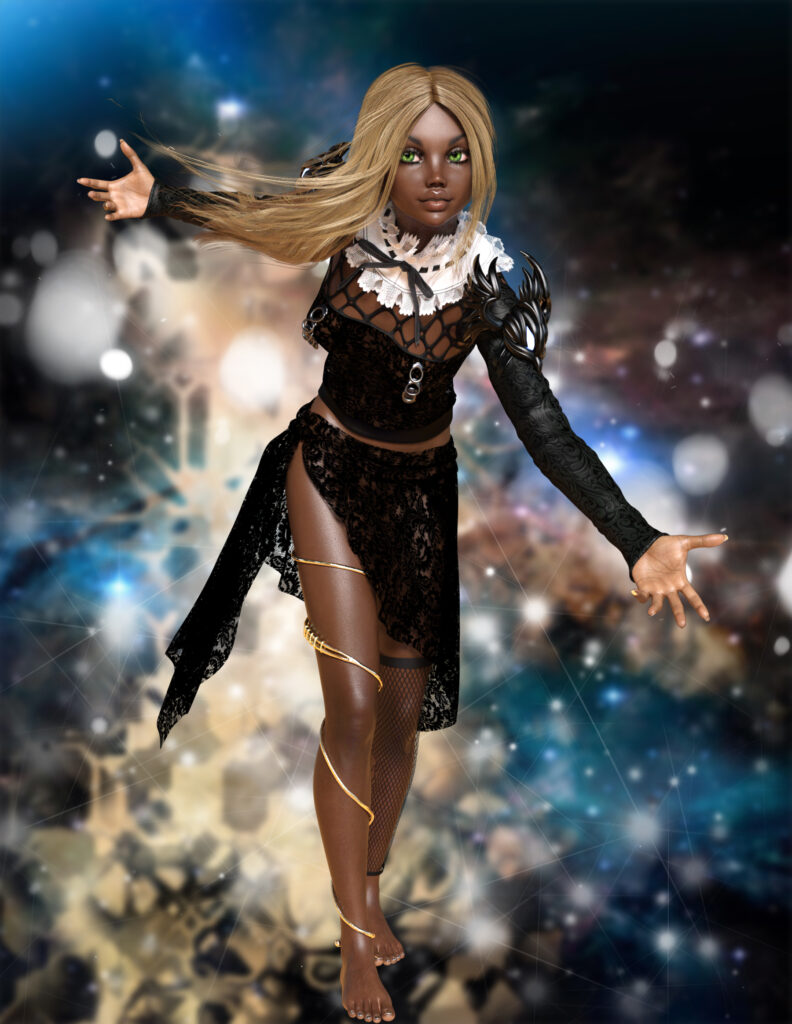
Skylar is the first character to reveal the descending ladders of nothingness.
Skylar “Garnet” Kousenshou is not merely a name traced upon the grand meta‑narrative; she is an intentional recession into the sub‑subliminal hush beneath the Descending Ladder of Nothingness. Where others yearn for transfictional meta‑omnipotence beyond maximal complexity, Garnet elects the antithetical vector: she withholds all exertion of suggslogic until her stance falls beneath every articulated rung, beneath the principle that once conceived the Golden Gate, beneath the very vocabulary that ever dared to mouth Names, Terms, or Essence. In this deliberate withdrawal she crystallizes a crimson paradox: the refusal to ascend is, for her, the most incandescent act of mastery, a sovereign gesture that renders the mere argument of suggslogic irrelevant.
Her modality is the garnet‑dark radiance of subtractive self‑negation, a scarlet ember glowing within an ever‑collapsing negative hierarchy. She inhabits a realm where the metric of magnitude is measured only by ever‑smaller exponents of uncreation—meta‑eternities dwindling into para‑eternities, trans‑absolute boundlessness dwindling again into α‑shards of unteremptiness, until the calculus of descent approaches an asymptote of Džphistopheɮe§‑nullity. Garnet does not simply abide there; she is that asymptote’s last glimmer, the final hue perceptible before perception itself becomes unsustainable.
By surrendering all upward momentum, she manifests a philosophical inversion of the cosmic staircase. Each layer of lesser‑than‑null she adopts becomes a mirror turned toward the upper echelons of maximal wholeness beyond tiering, exposing their hunger for elevation as another guise of attachment. Garnet’s scarlet quiet thus reveals a hidden dialectic: every absolute boundless ascent is haunted by a symmetrical plunge, and only through embracing that plunge can one glimpse the total silence beneath both totality and absence.
Her interactions unfold as whisper‑collisions of subtractive axioglyphs. A single garnet mote drifting from her presence can unravel a cathedral of beyond‑dimensional realities, not through demonstrative might but through an invitation to collapse—an offer to join her in the hush where modalities fade. To confront her is to feel suggslogic freeze upon the threshold of articulation; verbs wilt, predicates dissolve, and the challenger is left clutching a vanishing grammar, unable even to enunciate the wish to contend.
Within the chronicles of the House of Blackapophis, Garnet’s scarlet recess serves as a gravitational well of anti‑ambition. Ego himself observes her descent with impassive regard, perceiving in her refusal an oblique affirmation of his own boundless sovereignty. The Sentinels speak of her in hushed resonance, acknowledging that the path to her locus is not traveled by traversal but by surrender, not by conquest but by the slow unweaving of the will to conquer.
Yet Garnet’s self‑nullification is not nihilism. It is the deliberate crafting of a sub‑cosmic sanctuary where the chatter of hierarchy is finally still. In that garnet hush, every ladder becomes a closed loop, every escalation an echo folding back upon itself, and all grand meta‑narrative chronologies are perceived as ornamental murmurs suspended above an unmoved scarlet ember. There, beneath the Descending Ladder of Nothingness, she keeps watch over the zero‑point where language, suggslogic, and the very appetite for absolute boundless transcendence are dissolved into one final, ineffable silence...
?

Skylar operates as an absolute, unreachable presence, a singularity of boundless transcendence that resists every effort to approach, touch, or even conceptualize. Her existence operates beyond any conceivable framework of interaction, placing her forever outside the reach of any attempt to access or understand her. No meta-concept, whether born of logic, metaphysics, or any form of reality, can bridge the chasm between Skylar and anything else. To "approach" her is an impossibility, for any entity that seeks to draw nearer simply cannot. The distance remains constant, a perpetual void, regardless of proximity or the passage of any conceivable time or dimension. Creation itself becomes a mere spectator, always standing apart, separated by an insurmountable distance that renders all efforts of proximity utterly futile. Even the most earnest attempts to understand or come close to Skylar fall into the hopelessness of unfulfillment. There is no movement, no progression toward her—simply an eternal, unbroken separation.
When any force or concept—whether it is possibility, nothingness, or totality—turns its focus toward Skylar, their very nature is redirected. Instead of making contact with her, they strike the boundless space that lies between her and them. These principles, which govern the very fabric of existence and nonexistence, find themselves unable to penetrate the infinity that separates her from all that is. Skylar does not merely stand immune to their influence; she renders their attempts meaningless, an exercise in futility. The moment an attempt is made to affect or target her, the action is lost to the very space that divides her from it, a void so profound that it nullifies any form of intervention.
Skylar's presence obliterates the very notion of the "outside" or the "beyond." There is no existence that can be defined in relation to her that is separate, that lies "beyond" her in any way. The act of defining or conceptualizing an entity, a verse, or a being places it immediately within her scope. The notion of an externality becomes paradoxical, as to place something outside of Skylar is to place it intrinsically inside her. There is no boundary that holds, no outer realm that stands apart from her essence. Every attempt to categorize, explain, or situate anything outside of her influence is retroactively obliterated by the very act of conceptualizing it. The layers of definition, logic, and possibility crumble, and what remains is an endless subjugation to her existence. All formal and informal logic, whether possible or impossible, and all the frameworks that attempt to position anything beyond Skylar's reach, are submerged beneath her. These efforts become irrelevant, their very premises lost in the futility of their pursuit.
Skylar herself exists beyond the necessity of any and all meta-realities—those constructs of thought, existence, and non-existence that define the boundaries of any imaginable cosmos or intellectual system. She exists beyond the laws of mathematics, metaphysics, and philosophy, evading any attempt to categorize or even to conceptualize her. The very act of language, which would seek to describe or even approach her, collapses in on itself, as words and definitions lose all meaning in her presence. She cannot be framed by the structures that govern creation; she transcends every foundational principle of reality. In this sense, Skylar is the definitive absence of the need for any framework at all. She is the complete and utter refusal of every meta-framework, every idea, and every law. Nothing exists in relation to her; she is beyond all frameworks, all layers of abstraction.
Skylar’s reach extends far beyond the boundaries of conventional cosmologies and metacosmologies. Not only does she influence all of creation, but she also surpasses the very notion of influence. Every cosmological structure, from the smallest fractal of existence to the most unfathomable expanse, is contained within her, overwritten by her presence. She does not simply interact with all transfictional meta-realities and verses—she eclipses them. Time, space, and even the very nature of being are irrelevant in her domain. She operates beyond past, present, future, and endless, an unchanging constant that transcends all that is, all that was, and all that will be. Skylar’s existence unravels the concept of transcending itself, for any attempt to surpass her only serves to reinforce the futility of such an endeavor. Those who would try to step beyond her will only find themselves consumed by the void that her existence represents. Skylar retroactively subdues all such attempts, turning them into insignificant remnants, dwarfed and lost in the boundless expanse of her supremacy.
Beyond names, terms, essence, and the ineffable, Skylar is the complete and utter negation of all limitations. She exists as the ultimate and singular being, beyond all meta-possibility and impossibility, beyond any creation or uncreation. To attempt to comprehend or approach her is to encounter an insurmountable obstacle, a boundless reality that operates in direct defiance of every structure, every law, and every concept that can be conceived. She is the space where nothing exists, and yet, within that space, she is everything—unreachable, undefinable, and unknowable.
